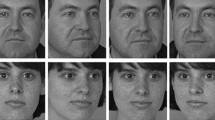Abstract
In a reduced dimensional space, linear discriminant analysis looks for a projective transformation that can maximizes separability among classes. Since linear discriminant analysis demands the within-class scatter matrix appear to non-singular, which cannot directly used in condition of small sample size (SSS) issues in which the dimension of image is much higher, while the number of samples isn’t unlimited. Both the between-class and within-class scatter matrices are always exceedingly ill-posed in SSS problems. And many algorithms are suffered from small sample size issues still. To solve SSS problems, many methods including regularized linear discriminant analysis were proposed. In this article, a way was presented by optimized regularized linear discriminant analysis for feature extraction in FR which can not only fix the singularity problem existing in scatter matrix but also the problem of parameter estimation. The experiment is conducted on several databases and promising results are obtained compared to some state-of-the-art methods to demonstrate the effectiveness of the proposed approach.





Similar content being viewed by others
Explore related subjects
Discover the latest articles and news from researchers in related subjects, suggested using machine learning.References
Zhang L, Zhang D (2017) Evolutionary cost-sensitive extreme learning machine. IEEE Trans Neural Netw Learn Syst 28(12):3045–3060
Zhang L, Zhang D (2016) Visual understanding via multi-feature shared learning with global consistency. IEEE Trans Multimed 18(2):247–259
Sha C, Zhao H (2017) Design and analysis of associative memories based on external inputs of continuous bidirectional associative networks. Neurocomputing 266:433–444
Jolliffe I (2005) Principal component analysis. Wiley Online Library, New York
Lee S, Park YT, d’Auriol BJ et al (2012) A novel feature extraction method based on normalized mutual information. Appl Intell 37(1):100–120
Friedman JH (1989) Regularized discriminant analysis. J Am Stat Assoc 84(405):165–175
Chen L-F, Liao H-Y, Ko M-T, Lin J-C, Yu G-J (2000) A new LDA-based face recognition system which can solve the small sample size problem. Pattern Recognit 33:1713–1726
Cai D, He X, Han JS (2008) An efficient algorithm for large-scale discriminant analysis. IEEE Trans Knowl Data Eng 20(1):1–12
Ly NH, Du Q, Fowler JE (2014) Sparse graph-based discriminant analysis for hyperspectral imagery. IEEE Trans Geosci Remote Sens 52:3872–3884
Li W, Liu J, Du Q (2016) Sparse and low-rank graph for discriminant analysis of hyperspectral imagery. IEEE Trans Geosci Remote Sens 54:4094–4105
Cover TM, Hart PE (1967) Nearest neighbor pattern classification. IEEE Trans Inf Theory 13(1):21–27
Lu GF, Wang Y, Zou J (2016) Graph maximum margin criterion for face recognition. Neural Process Lett 44(2):1–19
Kasun LLC, Yang Y, Huang GB et al (2016) Dimension reduction with extreme learning machine. IEEE Trans Image Process 25(8):1–1
Zhang Q, Deng K, Chu T (2016) Sparsity induced locality preserving projection approaches for dimensionality reduction. Neurocomputing 200:35–46
Shao G, Sang N (2014) Max–min distance analysis by making a uniform distribution of class centers for dimensionality reduction. Neurocomputing 143:208–221
Li K, Tang P (2014) An improved linear discriminant analysis method and its application to face recognition. Appl Mech Mater 556:4825–4829
Sharma A, Paliwal KK (2015) A deterministic approach to regularized linear discriminant analysis. Neurocomputing 151:207–214
Tao D, Li X, Wu X, Maybank SJ (2009) Geometric mean for subsPACe selection. IEEE Trans Pattern Anal Mach Intell 31(2):260–274
Loog M, Duin R, Haeb-Umbach R (2001) Multiclass linear dimension reduction by weighted pairwise Fisher criteria. IEEE Trans Pattern Anal Mach Intell 23(7):762–766
Bian W, Tao D (2011) Max–min distance analysis by using sequential SDP relaxation for dimension reduction. IEEE Trans Pattern Anal Mach Intell 33:1037–1050
Shao C, Lou W, Yan L-M (2011) Optimization of algorithm of similarity measurement in high-dimensional data. Comput Technol Dev 21(2):1–4
Georghiades AS, Belhumeur PN, Kriegman DJ (2001) From few to many: illumination cone models for face recognition under variable lighting and pose. IEEE Trans Pattern Anal Mach Intell 23(6):643–660
Sim T, Baker S, Bsat M (2003) The CMU pose, illumination, and expression database. IEEE Trans Pattern Anal Mach Intell 25(12):1615–1618
Acknowledgements
This work was supported by the National Natural Science Foundation of China (no. 61571069) and Project no. 106112017CDJQJ168817 supported by the Fundamental Research Funds for the Central Universities.
Author information
Authors and Affiliations
Corresponding author
Additional information
Publisher’s Note
Springer Nature remains neutral with regard to jurisdictional claims in published maps and institutional affiliations.
Rights and permissions
About this article
Cite this article
Tan, X., Deng, L., Yang, Y. et al. Optimized regularized linear discriminant analysis for feature extraction in face recognition. Evol. Intel. 12, 73–82 (2019). https://doi.org/10.1007/s12065-018-0190-0
Received:
Revised:
Accepted:
Published:
Issue Date:
DOI: https://doi.org/10.1007/s12065-018-0190-0




